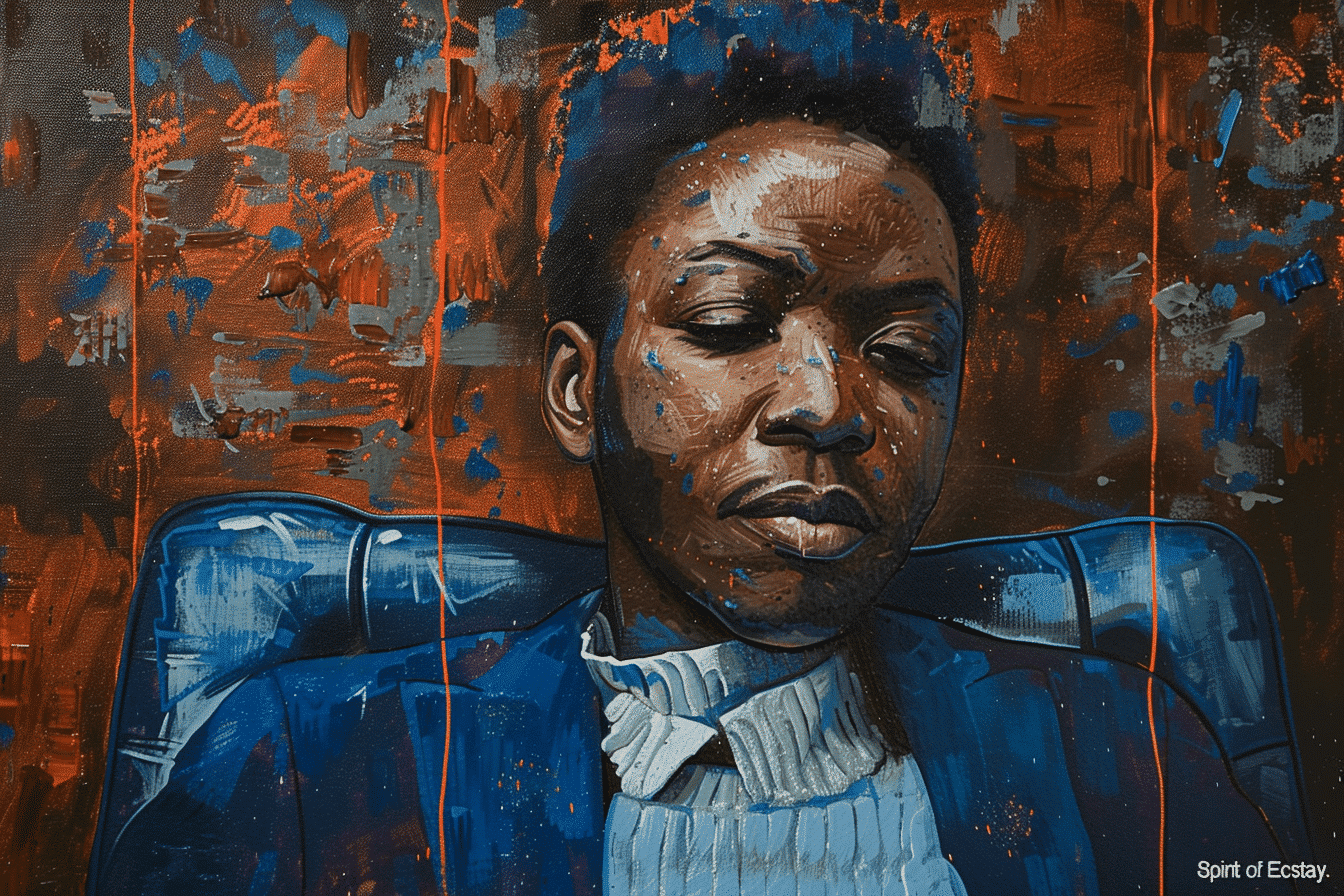In an evocative new exhibition, the boundaries of Black figurative painting are being tested and expanded. “The Whole World Smiles With You,” curated by Alayo Akinkugbe at Opera Gallery in London, delves into the complexities of Black art beyond mere joy and celebration.
Revisiting Classic Imagery
Thelonious Stokes, a Chicago-born figurative painter, offers a profound example of this exploration. His self-portrait, dressed in a white leotard and tutu, juxtaposes traditional ballet with potent racial symbols. The image, split in two, features Stokes holding a watermelon and a chicken at his feet. His coal-black face, a nod to the racist practice of blackface, creates a striking contrast. Stokes’ work encapsulates the struggle of Black identity in the context of traditional art forms, as seen in his paintings “Tired of Being a N*gger; Champion of A Fowl; Crossroads Red Ribbons and Chalk Lines” and “The Cry” on display at the show.
Challenging the Norms of Black Art
Akinkugbe critiques the market’s preference for works expressing “Black Joy,” a term symbolizing resistance through celebration. “It’s this idea that if a Black person is happy, then all is good,” Akinkugbe explained to CNN. This trend, she notes, gained momentum post-2020, following George Floyd’s murder. The exhibition, however, challenges this notion by presenting a broader spectrum of Black experiences.
Diverse Artistic Themes
The exhibition has three themes, beginning with vibrant, joyful pieces by Adjei Taiwah and Amoako Boafo. These works, characterized by bright colors and vivid imagery, represent the familiar face of Black art that has gained traction in recent years. However, the exhibition soon shifts to more complex representations. Noel Anderson’s woven images and Jazz Grant’s collage-style pieces deconstruct Black physicality and identity, highlighting the often-overlooked subtleties of figurative art.
Reclaiming Historical Narratives
Akinkugbe’s final theme explores the active representation of Black figures in art, challenging traditional European narratives. Stokes calls his technique of painting classical scenes with Black figures “Blackwashing.” He aims to empower future generations, stating, “I paint for the Black grandmas of the future… I want those Judeo-Christian images to be bootlegged, re-copied, and printed.”
The Future of Black Art
Public interest in Black art has grown, with sales of works by African-born artists increasing significantly in recent years. However, this trend is often tied to current events. Akinkugbe reflects on historical movements like the Harlem Renaissance, noting how interest in Black art can be cyclical. She hopes exhibitions like “The Whole World Smiles With You” will challenge viewers’ perceptions of Black art and potentially influence art history.
In conclusion, this exhibition offers a profound commentary on today’s state of Black art. As Akinkugbe states, “I would love for someone to see these paintings and have their gaze challenged. I think it could broaden someone’s idea of what Black art is. That’s what I hope will happen.”
